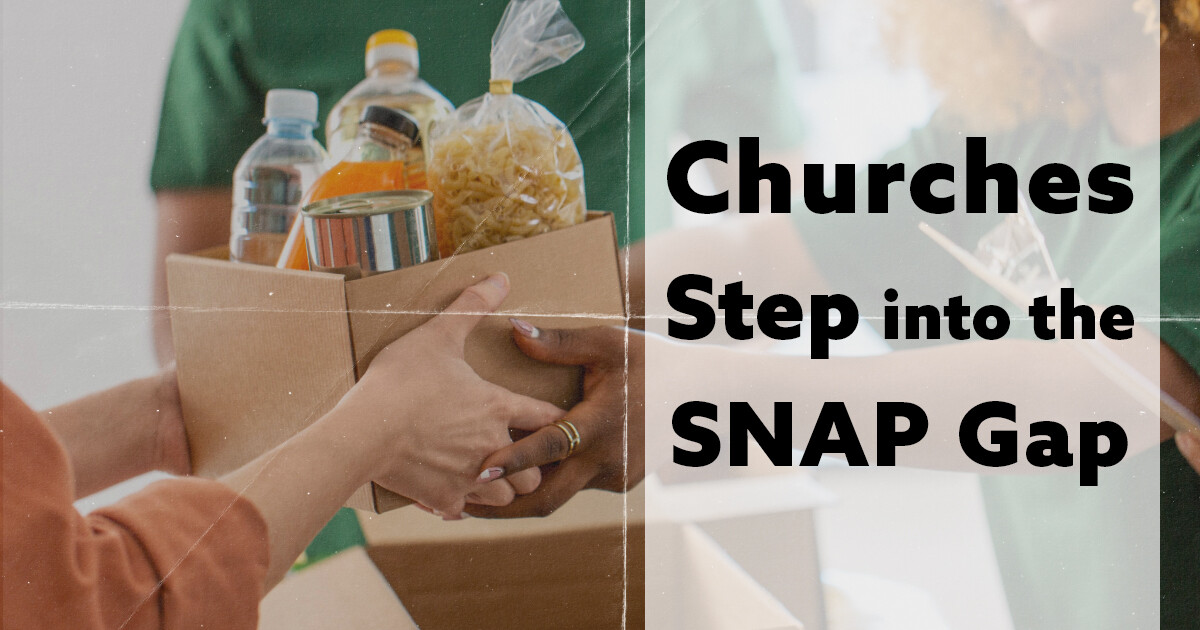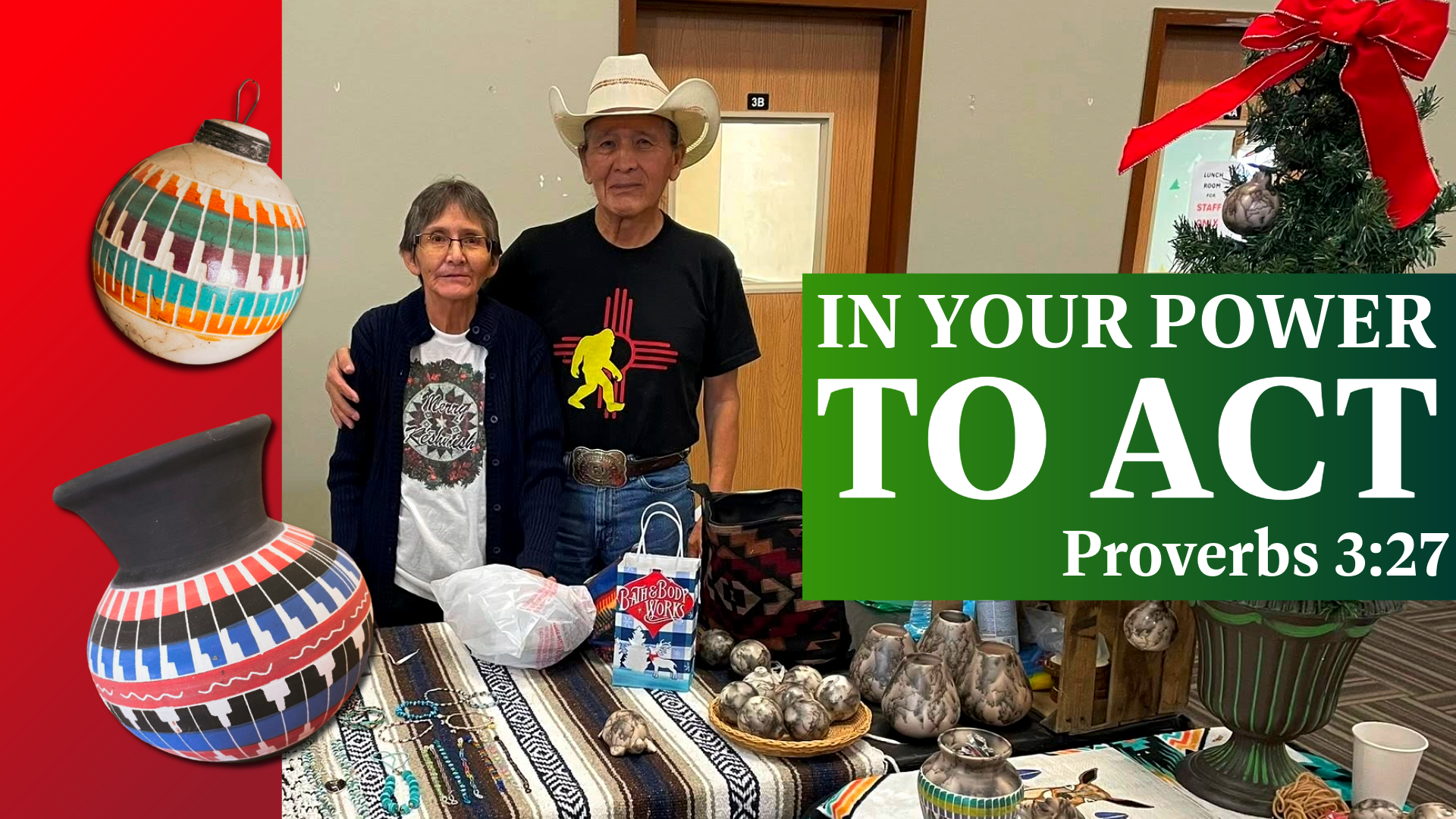
In the wake of the government shut down, millions of people across the country are likely to lose food assistance benefits in the coming week. In particular, the Supplemental Nutrition Assistance Program (SNAP) is set to run out of funding unless something stands in the gap to cover. But people all around the country are stepping up to do just that.
Ohio, for instance, announced on October 30th that an executive order had been signed by Governor Mike DeWine to cover the funding through the month of November should the federal government not reopen in time. Yet, there are questions about how long Ohio can supplement a federal program. The Governor said that, “While we will always do everything we can to support Ohioans who need it most, this is not a viable, long-term solution.” Approximately 1.4 million Ohioans rely on SNAP each month for food assistance.
While states like Ohio are stepping up, local churches in the CGGC are also making great efforts to support their communities during this time. We’ve reached out to numerous churches that have either recently announced food collection and distribution plans or churches with long standing food scarcity support.
CGGC Churches in Mercer County, Ohio like Mount Carmel and Mt. Tabor of Celina are working together to support the local food pantry, CALL Ministries. Pastor Scott Rowe of Mount Carmel Church of God said that “We are collecting [food] and then giving it to the food pantry. I’ve also reached out to the gym that I go to, and they agreed to start a collection there also.”
Uplift Community Church of God in Halifax, PA is also helping out with food distribution. In partnership with a farmers market in Harrisburg, Uplift Community began taking excess produce and redistributing it. Now, three years into the partnership, the farmers market gives Uplift thousands of pounds of food from August through November, and the network has spread to other CGGC churches like Glenvale Church of God, Enola First Church of God, and Swatara who also help. Their next produce distribution is set for Wednesday, November 5th, 2025, right as the pain from the loss of SNAP will start to be felt.
Pastor April Ocasio of Uplift recommends that churches sign up on websites like AmpleHarvest.org where farmers can find organizations who take their left over produce and help them distribute it so it doesn’t go to waste.
While many churches might be capable of pulling together a meal by asking for food donations from overstuffed family pantries, partnering with local food pantries, shelters, and schools can have a long-term impact in the community for Christ.
College First Church of God (CF) in Findlay, Ohio, for instance, serves as an overflow site for the City Mission, using CF’s refrigerators and freezers to store food, and distribute it when the City Mission doesn’t have enough space. Likewise, twice a year CF serves as a host site for the City Mission Mobile Food Pantry.
Due to their unique position on campus, College First has been feeding college students, and international students in particular, as well as providing clothes, blankets, and furniture during the colder months. CF has worked hard to become one of the first places international students find out about when they arrive on campus, which has blossomed into a thriving ministry, raising up students from India, Ghana, and all over the world into positions of leadership in the church.
Lastly, CF donates funds during their end of year benevolence giving to local ministries like City Mission, Chopin Hall, and Christian Clearing House. Pastor Nancy Hiser at College First recommended partnering with local schools who might be doing handing out lunches on days that the schools are closed, on holidays, or breaks. She noted that as many as 60% of SNAP recipients have children in their home, so families with children will be most affected by the funding pause, and schools are best positioned to provide. Supporting the schools then is a great place to start.
Of course, churches themselves are not immune or inoculated to the effects of the government shutdown. The Great Lakes Region of the CGGC has promised to support credentialed pastors who may be personally affected by the reduction in food assistance. Recognizing that some of the CGGC’s pastors need government support, GLC Executive Director Dr. David Odegard said that, “I wish none of our pastors had to supplement their income with SNAP, but some do”, and offered to help cover expenses this month. Likewise, other pastors were encouraged to contribute to a fund to help meet this need.
When asked about what motivated Mount Carmel to step into this ministry, Pastor Scott said that “Personally I grew up on SNAP benefits. My mom was disabled and my dad worked two jobs, but it still wasn’t enough, so I emphasize with the people who are struggling with food insecurity.”
The USDA website 2024 report says that as many 41.7 million people participate in SNAP on average monthly. While the monthly participants were higher in 2012-2013, and 2020-2022, the 2024 average sits only a little below this century’s high.
There are certainly many, many more churches in the CGGC that we didn’t get the chance to talk to that are stepping into the SNAP gap. It’s a beautiful thing when the church can work together with cities, schools, and other organizations to feed the hungry, and show people the love of Jesus.
“I’ve always believed that we can all do more together,” Pastor Scott said.
If you or your church is looking to help, but don’t know where to start, reach out to our office and we’ll put you in contact with churches or organizations that you can partner with to be the hands and feet of Jesus.
CGGC eNews—Vol. 19, No. 44





Login To Leave Comment